The Everest Base Camp Trek, is one of the most famous Trek in Nepal, which is famous for its fantastic mountain peaks and the beauty on the hills. Most of the places to this spot go through ridges and trails, but you would have ample space to rest and have meal on your way. And one of the best things about this place is that you don’t have to worry about being lost, as you can ask anybody for the next village. The people here are very friendly and offer help and support even to strangers. The people who live here are mostly shepherds and understand English; some even speak it fluently..
Mount Everest has captivated intrepid men and women since the 1920s. The exploits of legends such as George Mallory, Sir Edmund Hillary and Tenzing Norgay put the mighty mountain on the map; thousands have followed, making huge sacrifices, many with their lives in their own attempts to the summit. Everest Base Camp trek of Nepal provides you the chances to view the world's highest peak towring on the elevation of 8,848 meter from its touching destance. Taking a pleasure of the several snocaped himalayas this Adventure journey takes you to the south base of Mt Everest exploring the culture of legendry Sherpas and their life styles.The trek starts with sweeping flight to Lukla airport from Kathmandu where the walking starts from. You will trek along the Dudhkoshi river and discover the main capital of sherpa's origin at Namche. You will discover the largest monestery of the world at Tengboche and arrives no tree region at Dingboche. You will follow the same steps through the glacier where Sir admund Hillary and Tenzing Norgay Sherpa hiked to get the top of Everest on 1953. Mount Everest base camp Trek passes via the traditional villages, farming terraces, cultural stupas, monesteries. Some major peaks mt. Everest(8,848m), Mt Lhotse(8,501m), Mt. Makalu(8,463m), Mt Cho Oyu (8,153m) are standing higher over anything else on the planet. Mt Everest National Park region is also a home of birds, wilds and more. Aside from breathtaking scenery, travellers to the region can experience unique Sherpa culture by visiting monasteries and museums along the way. Days are filled with walking for the sheer pleasure of it, past colourful prayer wheels and across swing bridges straight out of an Indiana Jones movie, while evenings are rewarded with hot food and conversation with like-minded people around the dining-room fire. The heady mix of natural beauty, fascinating culture and a personal sense of achievement, as well as warm Nepalese hospitality from the people of the Solukhumbu region, makes the Everest Base Camp trek one of the worlds most unforgettable.
Upon arrival our representative will meet you and take you to the hotel. In the evening you can visit the Thamel Street, it is a very popular place. It has lot of restaurants, casinos and plenty of shops to buy trekking gears and accessories. You can also visit the Darbar Marg.
After breakfast we will proceed to the Tribhuvan Domestic Airport, Kathmandu. We will take a flight to Lukla. The total flying time is of 35 minutes. The experience of flying in this route will be one of your best. The flight will be passing through valleys and presenting some breathtaking views of the mountain ranges and the Nepali villages atop. Once you arrive in Lukla, our representatives will receive you. Immediately we will start our trekking and trek to Phakding. It is at an altitude level of 2652m. It is a simple trek for 2.5 hours. The trail will pass via many small villages and green mountains. We will stay overnight at the hotel.
After breakfast we will trek for Namche Bazaar. Namche is at an altitude level of 3440m. The route is surrounded by huge green mountain ranges. The Dudh Koshi river flows along the side till Namche. We will be having lunch on the route at Monjo as that is the last point to get food before Namche. The route between Monjo and Namche is a gradually inclining trail amidst thick green forest. You will be able to get a glimpse of Everest and Lhotse just before Namche, though not very clear. Overnight stay at hotel. Total trekking will be 5 to 6 hours with moderate difficulty level and a portion after Monjo will be strenuous.
This is a day for acclimatization and we will be resting in Namche Bazaar. It is a place that has everything one can wish for. Coffee shops, Bars, Restaurants and many more things to do. You can go to the Namche museum, this a little above Namche Bazaar, just about 20 minutes trek. You can get a clear view of Everest and Lhotse from this place. You can visit the Namche Bazaar (Market) and Namche Monastery.
This is comparatively a less crowded trekking route. The route is very scenic. You will pass through many villages like Thamo. You will get a bridge and underneath stream water flows, this is a very beautiful site and the sound that it makes is something never heard off. It will take 5 hours to reach Thame. It is a very beautiful village where Tenzing Norgay spent his childhood.
It will take about 5 hours to reach Lumde. Overnight stay at hotel.
It will take about 6 -7 hours to reach Gokyo. We will cross the Renjho La Pass (5360 m), this patch of the trek will be strenuous. View from the Renjo La pass is really amazing. Overnight stay at a hotel in Gokyo.
You will explore the famous Lakes of Gokyo. There are about 5 lakes, but mostly it is possible to cover 2 or 3 lakes.
We will proceed for Gokyo Ri (5330 m). The view of MT. Everest, MT. Lhotse from Gokyo Ri is breathtaking. Then we will descend and reach Dragnag (4790 m). It will take about 6 -7 hours at max to reach Dragnag.
We will cross the famous Cho La Pass (5420m). We will descend to Dzongla for overnight stay. This will again be an amazing view point to see the gigantic Himalayan ranges, including mount Everest and mount Makalu.
This will be a very pleasant walk for you. It is one of the simple routes to trek. It will take us about 3 to 4 hours to reach Lobuche.
This will be a completely glacier route. The trek to Gorakshep (5170m) and Everest Base Camp (5364m) is likely to be a moderate trek. It will not be possible to see the Peak of Everest; however the Khumbu Glacier will be very clearly visible. This part of the trek will surely feel like you are in heaven amidst the glaciers and see the gigantic mountain up-close. We will get to see the peak of the Everest very clearly tomorrow from Kala Patthar. Overnight stay in Gorakshep. The total trekking time will be 5 -7 hours and will be moderate difficulty level.
The hike to Kala Patthar will be the most difficult part of this trekking expedition of yours as well as the most rewarding one. You will be able to see the Peak of Everest. In fact kala Patthar is the only place which will give you views of almost all of the high peak mountains of the Himalayan Ranges. It will take about 2.5 to 3 hr to reach Kala Patthar from Gorakshep. After Kala Patthar it will be all descending from now on and the trek becomes very simple, though you have to be careful about the decline. We will need another 3 hours to reach Lobuche (4940m). Total trek time will be 7 hours max with only one steep incline and rest simple and easy trek.
It will take us about 5 to 6 hours to reach Dingboche. It is a Sherpa village, located on a highest peak. We can take a small hike to get a view of worlds three top mountain peaks, mount. Lhotse, Mt Makalu and Mt Cho Oyu. Besides these, you will see plenty of peaks and mountain ranges. Overnight stay at hotel.
The trek time will be about 5 hours to reach Tengboche. Tengboche is a beautiful small valley at an altitude level of 3860m. We can take a walk to the famous Tengboche Monastery.
It will take about 5 hours to reach Namche. You can see the beautiful Phortse village on your way. It is from this village, the maximum no of people have climbed the Mount Everest.
It will take about 5 to 6 hours to reach Lukla.
Take a flight to Kathmandu and overnight stay at Kathmandu. This a complete leisure day.
Post breakfast check out by 12 noon.
*In case of unforeseen weather conditions or government restrictions, certain activities may be cancelled or change of dates might happen, and in such cases the operator will try his best to provide an alternate feasible activity. However no refund will be provided for the same.
In the event of cancellation of your booking due to any avoidable / unavoidable circumstances at your end, we must be notified of the same in writing. Cancellation charges will be effective from the date we receive the advice in writing, and cancellation charges would be as follows:
25000+ Pictures and Reviews on the platform.
We have a minimum price guarantee. If you get the same product at cheaper price we will refund the difference.
We have activities across 17 countries, across every category so that you never miss best things to do anywhere.
We are always able to support you so that you have a hassle free experience.
At Everest Base Camp, climbers will often spend 4 - 8 weeks, acclimatizing to the altitude. During that time, the "Icefall Doctors" will set up ropes and ladders in the notoriously unstable Khumbu Icefall. Seracs, crevasses and shifting blocks of ice make the icefall one of the most dangerous sections of the route. Many climbers and Sherpas have been killed in this section. To reduce the risk, climbers will usually begin their ascent well before sunrise when the freezing temperatures glue ice blocks in place.
Camp I
Above the icefall is Camp I at 6,065 m (19,900 ft) Camp 1 is mostly a temporary camp with most climbers just spending one night at this camp.
Camp II
Base Camp II, Advanced Base Camp (ABC) is established at 6,400 m (21,300 ft). The Western Cwm is a relatively flat, gently rising glacial valley, marked by huge lateral crevasses in the centre which prevent direct access to the upper reaches of the Cwm. Climbers are forced to cross on the far right near the base of Nuptse to a small passageway known as the "Nuptse corner". The Western Cwm as the topography of the area geneally cuts off wind from the climbing route. The high altitude and a clear, windless day can make the Western Cwm unbearably hot for climbers.
Camp III
From ABC, climbers ascend the Lhotse face on set ropes up to Camp III, situated on small ledges at approximately 7,200 m to 7,400 m. From there, it is another 500 metres to Camp IV on the South Col at 7,920 m (26,000 ft). From Camp III to Camp IV, mountaineers are faced with two additional obstacles: The “Geneva Spur” and The “Yellow Band”. The Geneva Spur is an anvil shaped rib of black rock named by a 1952 Swiss expedition. Fixed ropes help climbers in scrambling over this snow covered rock band. The Yellow Band is a section of sedimentary sandstone. The route from the base of the Lhotse face to the Summit is almost always completely fixed with static line.
Camp IV
On the South Col, climbers are very close to 8,000 m and can only spend limited time at those altitudes even with supplemental oxygen. Climbers typically only have a maximum of two or three days they can tolerate at this altitude for making peak bids. Clear weather and low winds are important factors when deciding on a summit attempt. If weather does not cooperate within these short few days, climbers are forced to move down, many all the way back down to Base Camp.
From Camp IV, mountaineers will start their summit push from 8 pm to 2 am with the hope of reaching the summit (still another 1,000 metres above) within 10 to 12 hours. Climbers will first reach "The Balcony" at 8,400 m (27,700 ft), a small platform where they can rest and gaze at peaks to the south and east in the early dawn light. Continuing up the ridge, climbers are then faced with a series of impressive rock steps which usually forces them to the east into waist deep snow, a grave sudden large amount hazard. At 8,750 m (28,700 ft), a small table-sized arena of ice and snow marks the South Summit.
From the South Peak, mountaineers go after the knife-edge southeast ridge along which is known as the "Cornice traverse" where snow griping to irregular rock. This is the most bare part of the climb as a misstep to the left would send one 2,400 m (8,000 ft) down the southwest face while to the immediate right is the 3,050 m (10,000 ft) Kangshung face. At the end of this traverse is an imposing 12 m (40 ft) rock wall called the "Hillary Step" at 8,760 m (28,750 ft).
Tenzing and Hillary were the first mountaineers to rise this step and they did it with prehistoric ice climbing equipment and without fixed ropes. Now, climbers will ascend this step using fixed ropes previously set up by Sherpas. Once above the step, it is a comparatively easy climb to the top on fairly angled snow slopes - though the exposure on the ridge is extreme especially while traversing very large cornices of snow. After the Hillary Step, climbers also must traverse a very loose and rocky section that has a very large entanglement of fixed ropes that can be troublesome in bad weather. Climbers will typically spend less than a half-hour on "top of the world" as they realize the need to descend to Camp IV before darkness sets in, afternoon weather becomes a serious problem, or supplemental oxygen tanks run out.
Please Note for bookings done prior to 1st January 2018, trekkers are required to pay the Khumbu region Permit of NPR 2000 (Approx Rs 1250) separately in Kathmandu>bg>
Do not bring non-bio gradable materials Pay heed to the instructions given by the trek leader and guide Consumption of alcohol and other intoxicating substances are strictly prohibited Do check with your doctor if you are medically fit for the trek We recommend you to buy insurance from worldnomads.com for emergency evacuation Since Kathmandu-Lukla flights are dynamic, we recommend you keep a buffer day in hand Travel expenses to reach and return from Kathmandu. Food and drinking water throughout the trip. Soft-drinks / Beverages / Alcohols / Snacks / Chocolates Etc. Additional accommodation and food expenses if trek gets delayed due to weather, flight. Personal expenses (phone calls, laundry, bar bills, battery recharge, extra porters, bottle or boiled water, shower, etc.) Health Insurance, Personal Insurance and other travel insurance. Expenses for evacuation and rescue operations due to natural calamity, mishaps, injury or any health problem. Nepalese visa fee.
Footwear Hiking boots: Good ankle support. Hiking shoe or sneaker: As an extra, or to use in Kathmandu. Woolen socks: 3 pair of hiking heavy woolen socks (75-86% wool). Light socks: 3 pair of light woolen socks (at least 50% wool). Outwear Down jacket: It’s light and warm. At least, 700-fill goose down insulation for lightweight warmth. It gets very cold at night and in the early morning. Fleece jacket: Your fleece can be layered with your down jackets. Clothing Hats: Warm one for the morning and baseball cap or sun hat for the afternoon. Gloves: Insulated gloves to keep your hands warm on the cold morning trek and liner gloves for cool temper in the evening Hiking pants: 2 pair of hiking pants, one convertible (it can get hot in the afternoon). Cargo Pants: 1 pair of jeans and 1 pair of cargo pants for while you are in Kathmandu, and either fleece or other heavy sweat pants to wear during the evening downtime. Long underwear tops: At least 3 – to wear as a base layer for warmth. Underwear: 7 pairs of underwear. Tee and Tank: 5 performance tees or tanks to layer with the long underwear tops. Long underwear bottoms: 2 mid-weight long underwear bottoms to layer with your hiking pants during cooler points of the trek; or to provide extra comfort under your fleece pants in the evenings. Gears Day backpack: 25-35 L backpack (depending on one’s preferences). It should be large enough to comfortably carry your camera, water bottle, extra clothes and snacks while you are on your daily trekking route. Porters usually take off early in the morning and complete the trek with greater speed. You would not see them until later in the evening upon reaching your destination. Duffle bag XL: (140L-165 L) / (32 x19x19). You can purchase a duffel bag in Kathmandu for a real bargain. Small lock: Bring a small lock for your duffle bag. Sack /Plastic bags: 2 sacks or plastic bags in which to organize and store your dirty laundry. Trekking Poles: These will provide you with balance and support – your knees will really appreciate this on the downhill portions of your trek.( You can buy this in Kathmandu ) Sleeping bags: -10° C /14° F for a teahouse (rustic lodging) Guesthouses on your trekking route will only provide you with blankets. Get sleeping bags on rent @ around 70 Rs per day. Trekking Towels: 1 large, 1 medium and few wash clothes (quick dry is plus!). Accessories Cameras, batteries, and memory card: Trekking through the unmatchable beauty of the Everest region will make you a paparazzo! Bring extra batteries (charging cost $1$2.5 along the trail). 32 GB of memory should be sufficient. Sunglasses: Make sure they have 100% UV protection. Tablet computer: For entertainment in the evening; there isn’t much to do after 4pm. It is also quite cold and windy in the higher altitudes. Many trekkers choose to stay in their rooms at night; this being especially true once you have trekked into the more desolated regions beyond Namche Bazaar. If you don’t have a tablet, you should bring along books, mp3 players or playing cards to pass the time. These will become your best friends if you ever get stranded at Lukla Airport! Personal & Medicals Water bottle: Bring 2 bottles for your trek. Make sure they can hold both hot and cold liquids. Water purification tablets: These are optional; but if you want to buy them, it is recommended that you do this at your hometown trekking store. The tablets being sold in Kathmandu are questionable. Pain reliever: Almost all trekkers suffer from an occasional light headache; these will help you ease the pain. Sun block (35+SPF) and lip balm with sun protection are essential. Personal first aid kit: Having your own kit on the trek is a plus. Band-Aids: Untreated blisters could make your trek very difficult; fabrics are best. Baby wipes: Hot showers are limited. Wipes will come in very handy. Hand wipes: For hand washing in the morning – otherwise good luck with very cold water! Snacks and goodies: Trail mix, granola bars, energy bars, chocolate, nuts, candy bars, and powdered drink mix are all great to sweeten the trail and to give you a boost of much needed energy. Don’t stress on the high calories, you will burn it off in no time while trekking. Plastic zip lock bags: They are useful in so very many ways.
Experience of any high altitude trek at least 1 trek The climber must be fit and have sufficient stamina to cover 5 km of distance in 45 minutes without a stress. The climber should be able to carry a 10 kg backpack. Heart problem, high blood pressure, asthma, and epilepsy cannot be reconciled on this mission. The climber must not have the conditions mentioned above.
"It was wonderfull experience."
 Simran
Simran
It was an amazing experience to be on Chadar with Geographic Tours. Every arrangements was good.We all friends appreciate the quality they manitained in such tough Situations . Looking forward for many more experiences. Thanks alott G.T
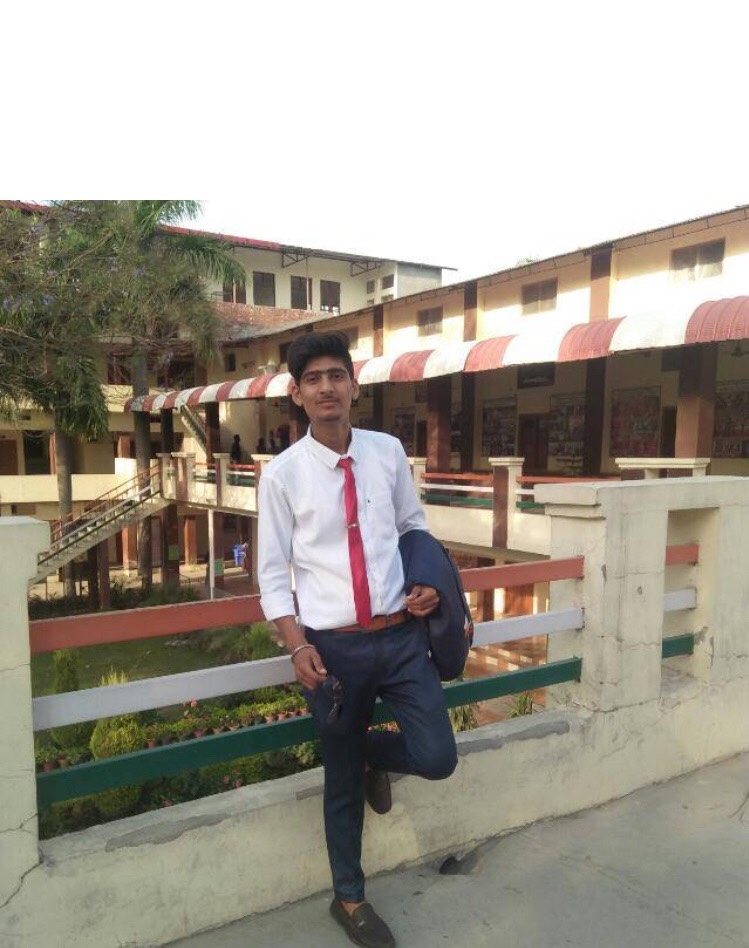 Mr. Vikas Jhah
Mr. Vikas Jhah
I would like to thank Mr. Salamat for designing such a wonderful trip to Manali. It was a great and well-arranged trip. This was the best travel agent experience I have ever had. We never had to worry or think about what we were doing next, or how we were going to do it, or how the quality would be, when you were involved. It was completely stress free tour for us. Thank you again for making my trip so enjoyable.
 Mr. Virender Kumar
Mr. Virender Kumar
I wanted to thank you very much for planning the tour of Ladakh for me and my wife. It was amazing and exceeded my expectations! We had a wonderful time their. Will look forward to work with you on our next Tour/Trip as well !
 Mr. Sushil Kumar
Mr. Sushil Kumar
Thank you Geographic Tours we have a awesome experience with you guys. Everything was good the camps ,trek leaders , hospitality , views ,food etc.Hope to be back with you again.
 Mr. Pasrija
Mr. Pasrija
Challenging trek which i did so far.This experience was absolutely brilliant. Tough time i had to convince my friends but we all had fun. Loved it .Hope to be back with you soon.
 Sana Aggarwal
Sana Aggarwal
Ladakh and its beauty is incredible. Being at the highest motorable pass i.e. Khardung-La. also climbing at the peak after a struggle, really makes you realise how small and insignificant you really are! Trek is beautiful. We have a great Experience.
 Anjum Rana
Anjum Rana
Just wanted to say thank you for your great work in booking our trip to Srianagr to Leh to Manali. We thoroughly enjoyed ourselves. All the arrangements and transfers worked like clockwork, I appreciate your efforts in making this happen.Everything well arranged, porters, guides everything was good. from hot water, hot food, medical kits , neat and clean sleeping bags everything was good..
 Vaishali Sharma
Vaishali Sharma
Me and my freinds enjoyed teh experience and the service.Without the supoort we might have collapsed. Thank you for helping make our once in a lifetime family trip something everyone will remember with affection.
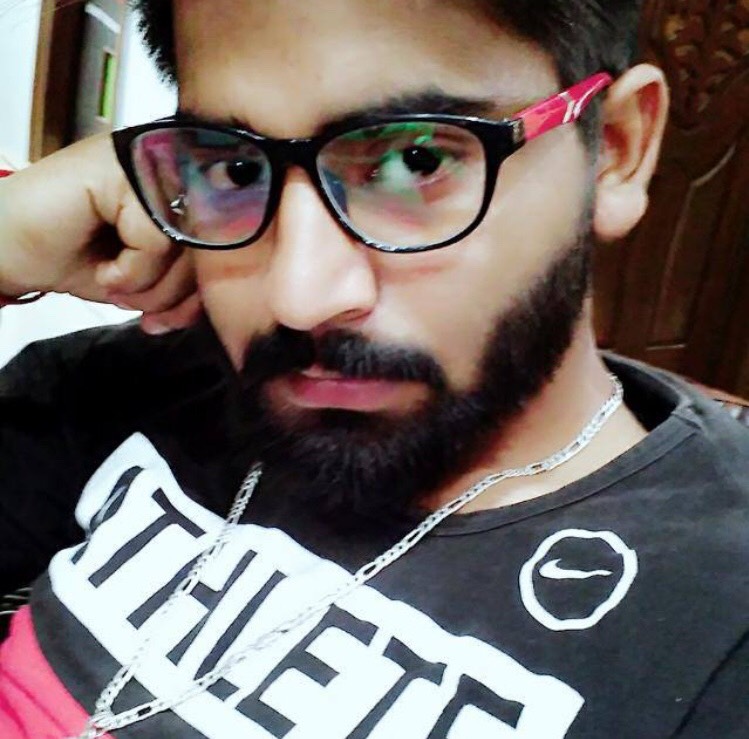 Mr. Sachin Patil
Mr. Sachin Patil
Must appreciate the efforts of the entire team for the smooth process.Thanks to Geographic Tours for all support.
Mr. Salamat , just wanted to say a big thank you from both of us. You have been extremely helpful, cooperative and responsive. Thanks to the trek leaders and the organisers for making sure that everything went through smoothly.
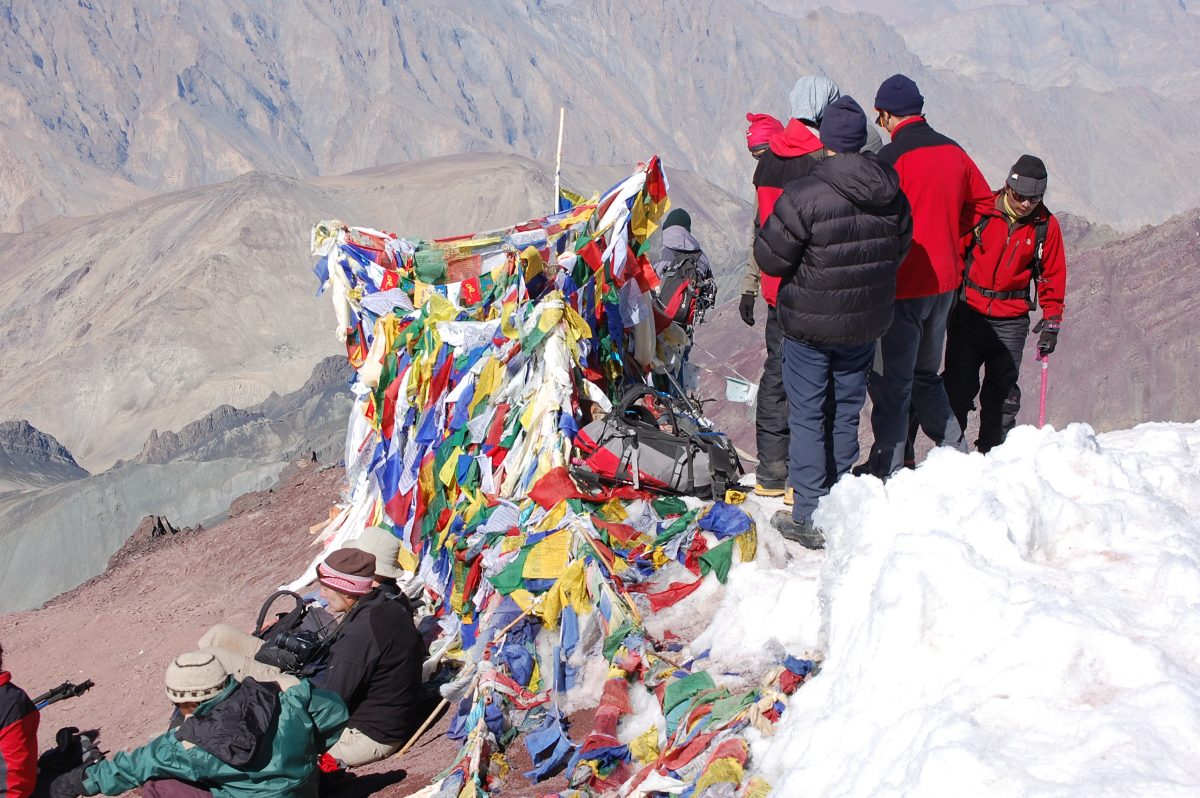 Mr. Vishal Kolhi
Mr. Vishal Kolhi
I did Stok Kangri trek with Geographic Tour and my experience was outstanding. The trek guide, leader and entire support team was extremely helpful. I successfully summit the mountain, a great thanks to Geographic Team.
It has been really nice interacting with you and we had a very comfortable and safe journey on the trip to Srinagar. The accomodation was very good and the transportation facility was excellent. Kudos to the Geographic Tours team for making it a memorable trip.
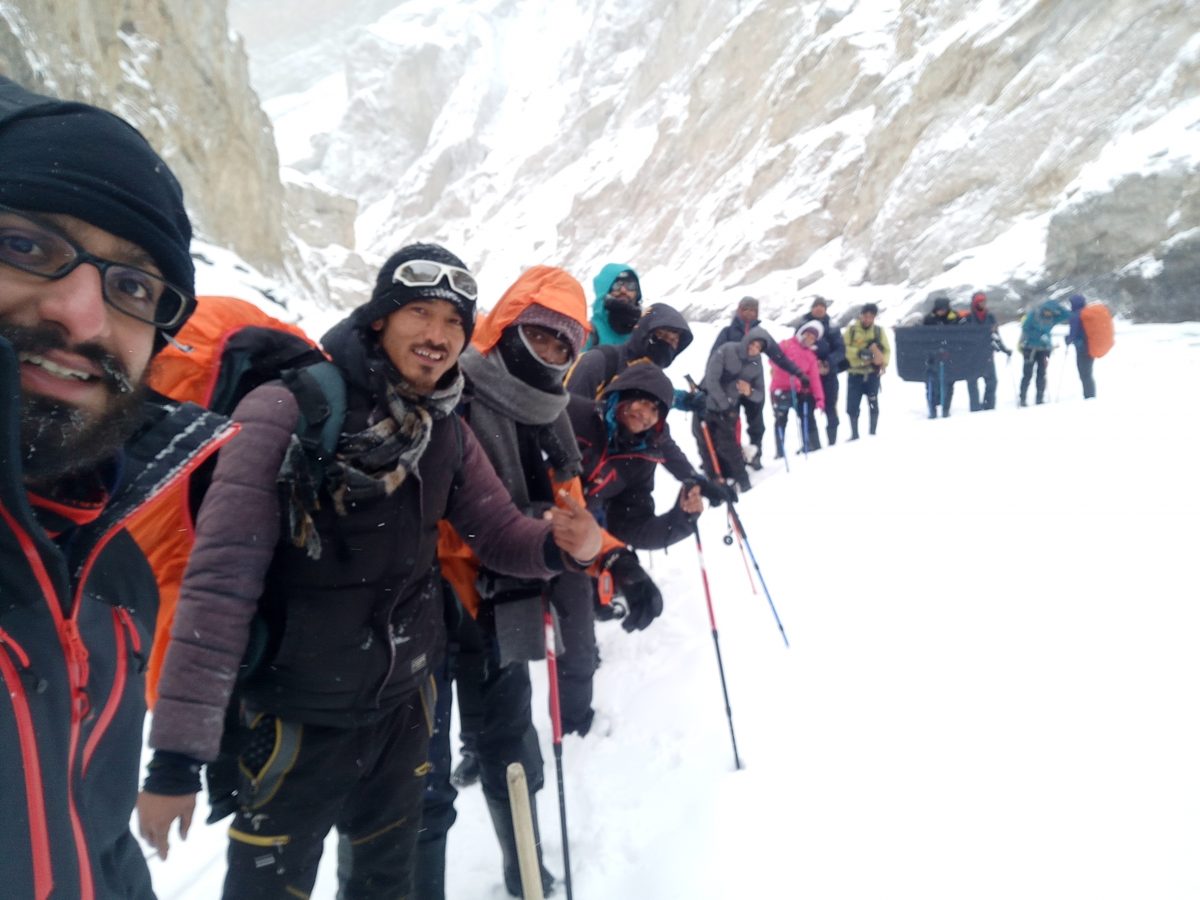 Akshit Raina
Akshit Raina
Our camping and trekking experience at Stok Kangri was really delight and as professional trekkers , it did not pose a major challenge for us and we want to keep participating in activities and treks like this, despite the difficulty level ! Thank you and cannot wait to plan our next family adventure.
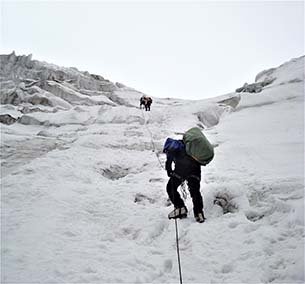 Mr. Sumit Sexena
Mr. Sumit Sexena
The Chadar Trek arranged was fantastic and trouble-free. Outstanding experience, well-arranged services, cooperative staff and beautiful memories! A trek to be remember always. I once again thank you for giving us your nice service.
Thanks for organising such a wonderful trip. We had the best time of our lives and the memories are going to stay in our hearts forever. Hotels were all very good and the pick and drop facility excellent. Food quality was little low but it was ok. I hope next time this will improve. Other things was quite good. We have really enjoyed the time. Keep up the good work !
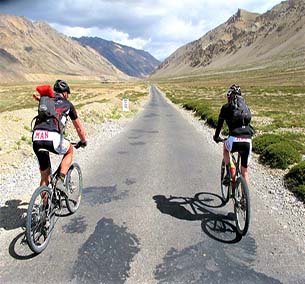 Mr. Om Prakash Singh
Mr. Om Prakash Singh
The entire tour package turned out to be good. The hotel accommodation provided in Leh and Manali was good. Even the shopping areas Mall Road, Leh Market were near to the hotel. The travel guide where pretty much on time and covered most of the locations. In all the trip was good.
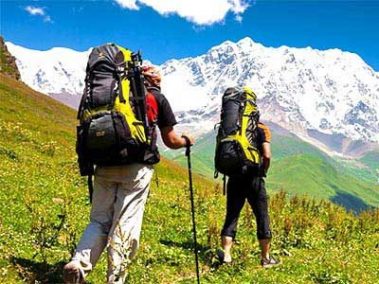 Mr. & Mrs. Dhawal
Mr. & Mrs. Dhawal
I would really like to thank you and your complete team for a wonderful honeymoon in LadakhThanks to Geographc Tours for their support & warm treatment. We Really enjoyed.
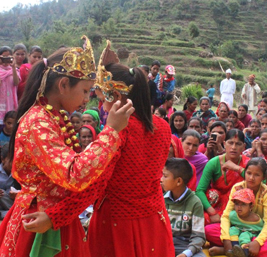 Mr. Ankur Randhawa
Mr. Ankur Randhawa
I just completed my tour of Leh-Manali arranged by you guys. The tour was very successful and I enjoyed it completely. Let me add that this was possible due to all help provided by youI appreciate your way of dealing with clients. Thanks again.
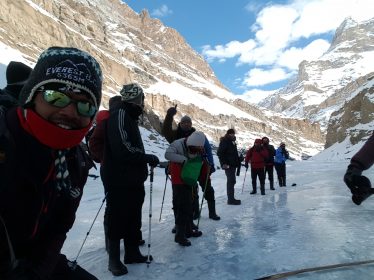 Mr. Abhijeet Jamwal
Mr. Abhijeet Jamwal
Hope to come back to Geographic Tours for future travel trips.
We enjoyed a lot. Once again, thanks a lot for your efforts and suggestions. I will recommend Geographic Tours to my Friends .
Hey this is hardik from Banglore. Well organized trek. Trek leaders were too good. All the porters and kitchen staff were really amazing. You can improve on better Guest House and Running hot water Faclity. Overall the experience was amazing as Chadar is a very beautiful place.
Thank you Guys. No complaints during my trip. Lovely group.
Hey guys wats up ? This is Ron from France. Recently I had done Chadr Trek with you. Each leg, each touch point, each adventure, felt like you and Fantastica planned it with care about our needs and expectations. Sometimes exceeding our expectations. Our hotels would be clean and accommodating, and that we had been guided by someone who knew the area, and had really listened to us. Thanks alott Geographic Tours for such a awesome and memorable Trek.
I am Annie from Mumbai. I have done Chadar Trek with you guys with my 3 Friends. We all appreciate your work , all the arrangements were superb. Thank you for helping make our once in a lifetime Friends trip something everyone will remember.
We were so satisfied with our tour of Ladakh, that we recommend to all of our friends and family to go with your Company for a memorable time.
Thank you, thank you so much for all your pre-planning and checking on everything for us, before, during and after this amazing adventure trip to Ladakh! We had a wonderful time and loved every minute! We truly appreciate all you did for us, making this trip of a lifetime an outstanding reality!
The fun and excitement of Climbing Stok Kangri, when you start your trip from leh. When reaching the trek base camp the eagerness to reach on top makes you excited and gives you the strength. It was just a beautiful Experience for me. Thanyou for giving us beautiful memories to cherish whole life.
Absolutely outstanding!
Thank you again for making my trip so enjoyable and pleasant . We look forward to Trek with you again.
We had a wonderful time …. I’ll be sure to be in touch if we can manage another trip to Ladakh. Thankyou Geographic Tours.
Just wanted to thank you for putting together a fabulous trip.
Hello Mr. Salamat, We had an absolutely stunning time. We loved the travel with the group around 18 which proved to be a quite compatible crowd. The hotel accommodations were absolutely superb! Thankyou for the memorable and best Trek.
We hope to travel with you once again in the future. Thank you Geographic Tours for creating Memories.
Hey I am Ankit from Bengluru. Me and my friends recently finished chadar Trek with you guys. We had an absolute blast! We’re already discussing another trip back this year. Thanks again 🙂
Just want to thank you so much for planning our first trip to Manali. It couldn’t be any more amazing and the most memorable trip of my life so far. I cannot wait till our next trip! We loved everything about the trip and hotel. Thankyouuuuu…
We had a great time on our vacation. The service, food and staff were excellent. I want to thank you again for all your help with the Kashmir Trip.
Your assistance was very much appreciated. The trip went well. The tours, transfers and breakfast were awesome. Take care and thanks for making our trip dreams come true!
Just wanted to thank you for our trip to Ladakh! My family and I had an unforgettable trip and the accommodations were awesome!
Thank you for giving me the opportunity to experience the Lifetime Trip. Everything and everyone exceeded my highest expectations! Thancxxx alotttt for everthing.
It truly was a trip of a lifetime.
The trip was absolutely amazing! We had such a great time exploring Ladakh. The food was really good. It was well organized, successful and enjoyable travel.
Thank you again for making my trip so enjoyable and pleasant. It was truly fun with you all.
Thanks for always making our vacation arrangements go so smoothly.
This trip is great and the hotel/staff/location is beautiful and magnificent. YOU ARE THE BEST. You did a very great job. Thak you for one of the best Trip.
Not at all expensive and absolutely wonderful. Thnkxx Guys for Everthing
Hey I am Nishant from Delhi. Everything goes along as planned without any problems, the tours are great. I will continue to travel with Geographic Tours and I do recommend them to my friends and family.
What a wonderful experience on this tour! Manali, our guide was outstanding. We would tour with Geographic Tours again without hesitation.
We are so glad that we went and we will do more tours with Geographic Tours in the future.
Our guide Rahim was fantastic and all the accommodations were perfect. I was impressed by the organization throughout. We all learned a lot and really enjoyed the experience.
Most important is that unlike other tour companies, their customer service is the best. Also we always feel safe when traveling with your Company . Thankyou Guys.
We were extremely impressed with you and felt that they really made the trip what it was for us and our whole group. I can’t wait to tell other people about my experiences and look forward to another trip with Geographic Tours.
Our trip was absolutely fantastic. the best hotels, travel guides, buses and meals. Best experience ever. Well done guys!
We are very happy with the entire experience of the tour. Good Job!
Thank you very much for the memorable experience to see Kashmir and Ladakh. Keep up the good work!
I was very pleasantly surprised with the arrangements included on this tour. Thanks !
I would like to personally thank you for have the patience to help me create a trip for 24 individuals.All the inclusions are superb. Thanks
It was wonderful! Thanks a bunch!! We’ll be contacting you again for future Trips/Tours.
I had a wonderful time.
Service, food, room, entertainment and activities were all very nice. We really didn’t want to leave Thank you Again
Thanks for making our trip dreams come true!
Yes we are back from our tour. Had a wonderful time, the services offered by you guys was excellent. Very good team work, hotel accommodations were excellent. Thank you for the wonderful professional services rendered to us. Thankyou!!!
Thank you very very much. We had a wonderful time and everyone appreciated all your arrangements. Of course there always have to be a few points but that is only an observation from all. Thanks once again for all your help.
We are back from a very pleasant trip to Ladakh. The hotel rooms were clean and spacious and the breakfast was superb. I would definitely recommend the hotel to your other clients.
So my experience with you all was really satisfying and it was handled very professionally. And we will for sure come back to you and take advice for next travel trip as and when we plan.
Thank you once again for all the arrangements!
Everyone was helpful and gave us correct guidance. Overall it was perfect and we had a great time.
We had created lot of memories and this was all made possible because of your management and I would surely recommend people to get the trip planned by GT.
Looking forward for more tours in future.
We had so much fun on this trip. Thankyou so mch from me and my wife.
Great thanks to everyone who made this vacation worth remembering.
I am Harinder from Delhi. I must appreciate your professional approach. Thancxxx for all the Things.
On behalf of Mrs Anne and myself I would like to thank you so much for organising and planning the beautiful Ladakh holiday . We had a super time and I must say the manner in which you planned everything was Fab. Thankyou keep the Great work done.
Thanks to you for a job well done. We had a great time catching up with our friends and are now back at work. We have enjoyed ourselves so much that all are now talking about travelling together again with hopefully some more to join next time around.
Thank you so much for the excellent service.
Your follow up and patience are admirable as is your service delivery.
Returned from a lovely tour to Kashmir Ladakh Manali. All your travel arrangements were perfect and efficiently executed and the tour was faultless.
Our thanks for your assistance.
We returned after a nice trip.The journey was very comfortable.Thank you for all the arrangements.
We, along with our families had a wonderful experience during our Manali trip. The trip was very well managed by you and everyone of us enjoyed. Thanks to you and your team for organizing our amazing Trip
We, along with our families had a wonderful experience during our Manali trip. The trip was very well managed by you and everyone of us enjoyed. Thanks to you and your team for organizing our amazing Trip
I and my family would want to thank you and your team on planning such a wonderful customised dream holiday to Ladakh.
Thanks for Everything during or Tour.
Thanks very much for a great service – which helped make our holiday in Srinagar a fantastic experience for us all.
Thank you for your organisation and we appreciated the effort that are made by you. Thankyou to make our trip such a wonderful experience.
You and your company did a terrific job planning and executing our vacation. We look forward to hopefully working with you again soon.
I’m writing to thank you for the well organised trip to Manali. My parents are very happy with the arrangements. I’ll definitely recommend your services to my friends
We were absolutely delighted with our trip to Ladakh; it was so varied and interesting.
So thank you and all your staff for all your hard work in providing us with the holiday of a lifetime!
I wanted to thank you for the excellent trip you arranged for us to Manali and Srinagar. The trip went by without a single snag. It was a wonderful, truly memorable experience for both my husband and me.
Overall both of us were more than satisfied with the trip.
Thanks once again for everything.
I was impressed with the high quality of your products and services on my recent visit to Srinagar which was perfectly arranged by your company.
Extremely Good and Keep It up!
Thank you for a memorable trip…everything was just so perfect 🙂
I am writing to thank you for the exceptional decor, entertainment and ground transportation services you provided. Everything turned out wonderfully!
Wanted to thank you for sorting everything out, all the arrangements ran flawlessly which added to make it a wonderful holiday. Will be back in-touch with you to sort out the next trip!!
The entire stay was lovely. The Hotel , everything was good.
Thanks for the Lovely Trip. We will always remember it. Thanks And Regards.
We look forward to working with you again if another event comes up.
We would certainly recommend your services to friends. You deserve to do well and you offer fabulous services. Thank you for making our trip so memorable
Thank you so much Salamt for the arrangements. We really enjoyed our trip of 5 days to Manali.All the arrangements were perfect and had no problem anywhere during the trip. Very well job done. Thank you!
We have returned from Leh. Thank you very very much, the trip was perfect. All your arrangements were excellent.
Thank you very much for the fantastic trip organised by you and your team , everything was well organised hotels were all good met some intersting people.
Please thank your team who has put their effort together to make the pleasant trip on my behalf. I am looking forward to another trip!!!
Many Thanks for organising my 10 days visit with family to Ladakh and Manali.
Your efficiency is commendable and your levels of service are very high. God bless you and thank you once again.
Thanks once again for everything. Keep up the good work.
The trip went off very well and we thoroughly enjoyed ourselves.
Thank you Guys for such great planning and you guys are our fixed travel agents for life.
Overall we had a great experience and worth all the money and effort put into it. We will never forget this vacation for sure.
Thank you and looking forward to seeing you soon!
Once again, many thanks from all of us and you truly deserve to take a bow!
Everything was well organised and well taken care of and the team has indeed enjoyed itself.
Thanks for a very well arranged trip. Everything went without a hitch, thanks to your perfect arrangements.
You made very intelligent and exceptionally efficient arrangements for us, for which we must thank you.
This is a sincere thanks from me and my family. Thanks once again for everything.
Thanks a lot. I was very happy with all arrangements, everything went off well and we enjoyed our trip to Manali , thoroughly. I will definitely come back to you for more such experiences.
We were lucky to have great weather, which made the trip all the more enjoyable! Thank you all again!
This short message to thank you all for your very professional and timely guidance, which allowed for a thoroughly well-planned vacation for our family.
Please do keep up the same levels in future.Thanksss al lottt for the Memorable Trip.
Thanks once again for the impeccable plan, tickets and every help for this memorable trip!! I hope we can plan more holidays with your help in the near future too!!
Thanks Dear for all the arrangements which were Excellent. Both our hotels at Manali and Leh were good.
The local guides who assisted us on day trips were also good. They were friendly and helpful. Even the drivers were good and explained a lot in each place. In all, our trip was excellent.
These services ran smoothly during my whole trip and for the same I would like to thank you Geographic Tours staff for efficient services.
It was a pleasure booking with you and your promptness, professionalism & comprehensiveness is very well appreciated. Look forward to working again with you in the future.
Thanks for the entire arrangements in Manali Srinagar Bike Tour. It was the most memorable trip for us. Everything was planned nicely, we didn’t encounter any problem. Thank you!
I would like to thank you for your great organisation and hard work.
Thanking you all once again. Kudos!!
I take this opportunity to thank you personally on behalf of my family who made the trip. Look forward to be associated with you in Future.
Thanks very much for organizing such a perfect holiday.
Thank you very much for planning a perfect holiday for my hubby and self.
Many thanks for arranging a wonderful trip… Honeymoon surely will be a memorable one!
I am extremely pleased with the entire tour, especially the way it unfolded. Thankyou so much for t5he Entire Trip.
We get to experience togetherness, love, serenity, fun, adventure and comfort. Thanks alott.
Thank You and We Love You!!!
Just a note to tell you we had a wonderful time! The hotels that you chose were good and the places wonderful.
We had a great time there! Our hotel was good, easily accessible and centrally located.
Many thanks for all of your help!
My wife and I thank you for facilitating a wonderful holiday in Manali.
We wish to place on sincere appreciation and extend our very best wishes for future and look forward for a long & healthy business relationship.
Thank u once again for making our trip so enjoyable, pleasurable and hassle free.
We thoroughly enjoyed our vacation.
Thank u once again for making our trip so enjoyable, pleasurable and hassle free.
It was a great time I had with you and thanks a million for everything.
I have travelled to few destinations with other groups, but never seen this kind of team. YOU ARE THE BEST.
Great working with you again – thanks again for everything.
I am happy that we work with companies like yours who go the extra mile to respond to the customers, thanks again.
We did not receive any negative feedback on any tours or guides or accommodation. Thank you very much for all your efforts and the great operation!!! 🙂
Thank you to all the Geographic Tours staff for making the trip a memorable one for all my friends. Well done.
It was just amazing the way you arranged everything for us for our trip. All was well planned and we did not waste a bit of time because of all the arrangements. You made our holidays memorable for our life.
Once again thanks for all the help. Everything went So planned. Thanks for your guidance and support.
We returned on Thursday after an excellent Motorbike Trip. There were no problems faced and everything went as planned. We would like to thank you for your help and cooperation.
I am writing to you behalf of all of us. We wanted to say a big “Thank You” to you for all your kind assistance in organizing a Manali Srinagar Bike trip. We had a very comfortable stay and we had a great time.
Staff was very courteous and helpful. Thanks again for organizing a wonderful trip to Ladakh!
I really appreciate your concern and efforts in servicing and taking the initiative so that your clients get the best service. Thankxxx alott,
Thank you guys this trip wouldn’t be this perfect without you guys. Looking forward to planning my next trip with Geographic Tours.
Hope you are doing well. We would like to thank you for your support provided during the Trip. Thankxx a ton.
Once again we would like to thank you so much for organising our perfect trip to Uttrakhand, we spent a wonderful time during our vacation.
We are back from a very pleasant trip to Manali. Thank you for sorting out our accommodation. We really enjoyed our stay at Lumbini Hotel in Leh. The hotel rooms were clean and spacious and the breakfast was superb. I would definitely recommend the hotel to your other clients.
Thanks for all your help and advice. Thanks alott or the Lovely trip.
Thank you very very much. We had a wonderful time and everyone appreciated all your arrangements. Thank you all.
Locations of all hotels was excellent as all were very central. Thanks once again for all your help.
Yes we are back from our tour. Had a wonderful time, the services offered by you guys was excellent. Very good team work, pick ups were always in time, hotel accommodations were excellent. Hope to use your services again in the near future.
Was very impressed with the speed and assuring words for the travel arrangements . My sincere GRATITUDE to you and YOUR TEAM, WELL DONE !!
Overall it was perfect and we had a great time. Thank you once again for all the arrangements!
It was an fanatic trip and very well arranged.
So my experience with you all was really satisfying and it was handled very professionally
We will for sure come back to you and take advice for next travel trip as and when we plan.
We are very much satisfied with your services and in future we will definitely be in touch with you and now you can add our name in your priority customers list.
we enjoyed a lot over there.
Thank you very much for your support. As always you have once again excelled in your perseverance to ensure the best service levels.
I would like to take this opportunity to thank you and your team for the excellent service, provided to me and my colleagues. Thankss alott.
Overall everything was well-done. Hats off. You really organized it very well. Once again thanks a lot for all the help.
I was told that most of the customers were delighted with the itinerary, arrangements and the choice of Hotels. I sincerely appreciate this efficiency.
I would certainly like to take your help in future and also recommend your organization as a choice of reliable tour operator. Wish you all the best.
Overall it was an exceptional holiday and a job well done on your part.
The entire experience was superb and the arrangements made by you along with your counter parts was impeccable.
The guide was co-operative and enthusiastic. Hotels were awesome. Thank u very much again.
Firstly a big thanks to you and your team for arranging for this wonderful honeymoon trip . The stay as well as the tour package was fab!
It was a pleasure to meet you and work with you in Ladakh Bike Trip. I look forward to working with you again in India and another successful operation.
The staffs’ care and attention shown to our passengers made it a very pleasant and memorable experience for them. Thankxxx Alottt for Everything.
Thank you for the highly successful Trip in Manali.
I would sincerely like to thank you for the wonderful service being offered to me and my wife with all the work. Once again thanks to you guys and look forward to your continued support.
We would like to thank you for arranging a wonderful trip to Ladakh.
I was thinking to give feedback on my own. But any way it was nice experience with your company specially because of you and Salamt. Planning was good.
Over all tour good and well suggested .
A very inspiring, elevating trip. Enjoyed seeing all the places we have read and heard about over the years.
You took an extra effort in making this vacation a memorable one for us. We all would like to Thank you All Once Again.
Keep up the good work and well done.
I am back from the tour of Ladakh. My husband and me enjoyed the trip very much.
I am satisfied with the service provided by your company and may take your services for our future trips.
We had a great holiday in Srinagar Ladakh. All the arrangements worked out very well. Thankyiu again for the Whole Trip.
Thank you very much for organizing a beautiful tour for us. It was one of our best trips.
It was a wonderful experience during my first trip to Ladakh. Thanks to Geographic tours for delivering as committed.
It was a great experience.
Thanks to Geographic Tours team for making such well planned trip.
Thank-you for giving us the opportunity to share our experience. Thanxxx alottt.
I appreciate very much all the efforts from you all.
We, along with our families had a wonderful experience during our trip .The trip was very well managed by you and everyone of us enjoyed. Thanks to you and your team for organizing our amazing Trip. Looking forward for future trips through Geographic Tours.
We, along with our families had a wonderful experience during our trip. The trip was very well managed by you and everyone of us enjoyed. Thanks to you and your team for organizing our amazing Trip. Looking forward for future trips through Geographic Tours.
We returned after a nice trip.
Thank you for all the arrangements.
The journey was very comfortable.
Returned from a lovely tour to Ladakh. It was perfect and efficiently executed.
Our thanks for your assistance.
Thank you Salamat for exceptional service and looking forward to an exciting future!
Everything came off without a hitch – what a thrill for this long awaited trip. We highly recommend your services.
My wife and I recommend your Travel Agency to our friends with confidence. Thank you for making all our trips so memorable.
Koshal We would like to thank you for your outstanding ser
Thanks for taking such good care of us. Looking forward to work with you again.
Just wanted to thank you for being so gracious and good to us!
You all did a great job helping me obtain a great rate as well as great times for travel.
Our Sincere Thanks to you and your Team.
My sister was absolutely thrilled! It was the trip of a lifetime for her!
Our trip to Ladakh was great. You were extremely helpful to me as we planned the trip. Thank you for all you did to make our stay in Ladakh so successful.
I would strongly recommend Geographic Tours Travel Agency for anyone that is looking for very helpful and extremely friendly travel agents.
I would strongly recommend Geographic Tours Travel Agency for anyone that is looking for very helpful and extremely friendly travel agents.
Just wanted to let you know what a wonderful time we had while in Manali Srinagar ladakh trip. It was due to you, and your excellent planning and recommendations.
I know everyone worked real hard on this. So give yourselves a pat on the back. Thank you.
Thanks for really great customer relations.
All of your staff were so happy my husband and I had such a good time.
We had the most remarkable family tour with Geographic Tours.
It was the best trip ever.
What a wonderful experience with you guys! Thanks alottttt.
The staff were lovely and attentive. Excellent. Everthing was beautiful.
It was a wonderfully organized trip.
I would highly recommend this company to anyone wanting a fun, relaxed, educational holiday with fine food – they will deliver!
Excellent. Our best tour operator yet. The itinerary was carefully thought through and well balanced. The trip represented great travel for the cost.
My experience, a week-long tour of Ladakh, was superb.
From initial contact, to booking, to superb coordination by the tour organizers, the excellent knowledge and wonderful humor of our guides, and the selection of tour sites, the trip was organized and run smoothly and with the interests and comfort of the participants always kept in mind. They are by far the best tour operator we have traveled with.
My wife and I have done many tours with a variety of tour companies. G.T is definitely the best.
This was my first visit to Manali ladakh, and it was wonderful. We had a tour manager, an expert guide and a local guide to take us round & show us the sites. The hotel was excellent, quiet & secluded.
This was a superb tour… beautifully crafted.
All in all, the perfect family trip.
It is the best holiday we have ever had. Many thanks for your meticulous attention to our comfort.
We will never forget this trip with Geographic Tours…and are already planning for another one!
Thanks for all your assistance.
We had an absolutely stunning time. We loved the travel with the small group of Chdar Trek.
I thank you so much for all that you did to make this trip so successful. Both rakhi and I would recommend you and your agency to anyone anytime!
I thank you so much for all that you did to make this trip so successful. Both my friend and I would recommend you and your agency to anyone anytime!
We had the most wonderful time at Ladakh Trip! What a perfect weekend excursion. Many thanks for all of your help.
Everyone had the most incredibly experience and the itinerary was appreciated by all. Look forward to continuing to work with you in the years ahead.
You guys did a fantastic job and I greatly appreciate it. Thank you again for making a historic trip. i greatly appreciate all the hard work you guys did.
Can’t tell you how much we enjoyed the trip. All worked so hard to make sure we were comfortable and taken care of well. We were so fortunate to team up with a great group of people
This trip went beyond our expectations and we wouldn’t hesitate to recommend it to anyone or to use Geographic Tours again.
Thank you for giving me the opportunity to experience the Lifetime Trip. Everything and everyone exceeded my highest expectations!I don’t know how you managed to put together such a cohesive group of people without ever having met us in Chadar Trek. Thanks for everything.
The tour itinerary was well-organized, extensive and varied. Our tour guide, was extremely knowledgeable and shared his knowledge with enthusiasm and humor. Last, but not least,our driver, kept us safe and comfortable. Thanks
It truly was a trip of a lifetime.
It truly was the experience of a lifetime and would not have been without you and your team.
I thank you so much for everything. You all did a remarkable job- thoughtful, responsive, thorough, joyful.
Mr. Salamat worked with me to put together a fantastic itinerary and everything was flawless. There was so much learning, laughing and love during our 10 days. Thanks alott everyone.
We all can’t wait to go back and we would have our adventure again. Thanks for putting together a wonderful trip.
We returned yesterday from our amazing trip to Ladakh. I just wanted to say thank you so much for everything you did to make this possible for us. I am so grateful to you and Geographic Tours for all you did for us.
Truly! You all went above and beyond to make sure our trip went smoothly and we appreciate it! More than you know.
We are home and fine…..what an amazing journey! Overall, the trip was simply amazing
All travel arrangements/lodging/meals/excursions really top of the line…..in every way.
Thank you…… for the most memorable Trip.
The trip exceeded my expectations. It was fantastic.
I want to thank you for a wonderful trip. It more than exceeded our expectations.
The trip was excellent.
Thank you, Salamat, for all your hard work to make the tour memorable. Please let me know if you need any other feedback.
We have enjoyed our trip to Manall and we are glad that we toured with Geographic tours.
We have recommended Geographic Tours to others and intend to continue to recommend Geographic Tours.
We had a great time with the group on our Stok Kangri adventure Trip. The tripr was well-organized and extremely informative. Thank you!
Our only problem was with the quality and presentation of the food. Eating food prepared for a steam table night after night was very boring and repetitive. Rest of the things are quite good.
The trip was fantastic and everything that Riya and I had hoped for.
My husband and I wanted to thank you for an extraordinary trip to Ladakh.
Again Salamat, thank you for all your efforts to make our dream trip… also a perfect one!
I just want you to know that we had an amazing trip!
We look forward to working with you again!
I also wanted to thank you for organizing an amazing family vacation in Ladakh. It went so smoothly and we had a really wonderful time!
Everything on the trip was perfect. The perfect place to take my family. Thanks for all that you did.
Trip was great!
Thanks for all your help. I may be sending some friends your way.
This was a wonderful trip to Manali.
I can’t thank you enough for planning this fabulous trip. Everything went smoothly.
This trip surpassed my expectations. I am so glad we booked it with you.
The trip was far more than I had hoped for and it will be one of the highlights of my life …
I had the BEST time ever.
It has been a pleasure and a privilege to be a part of this wonderful group in Chadar Trek.
Thank you for Experience of the Lifetime.
Jim and I wanted to express our gratitude to you for yet another wonderful vacation in Ladakhl! Everything went smoothly.
Again, thank you for everything you did on our behalf.
I had a great trip. Thankyou so mch for making it really memorable for me.
We want you to know that we had a fantastic time and it was all because of you!
It was just a wonderful, wonderful trip! Thank you for everything.
We have already recommended you to a number of people. Thancxxxx Guys.
We had a great time…
What a fantastic trip! Thanks Geographic Tours and whole Team for making this for us.
The Ladakh Manali experience was incredible and everything worked out perfectly.
Once again, a huge thank you for all your work and making us, as always, feel so special.
Not only were all the hotels wonderful, the touring, guides and personal attention to travels needs and safety were first clas. I would highly recommend to those clients who want something different.
Thanks for everything, you make it all so pleasurably.
What an amazing vacation we had. Everything was planned out perfectly, as only you can do. We had a lifetime of memories.
We all had the trip of a lifetime. Thank you again for all of your impeccable planning.
Thank you so much and when we plan our next trip to Srinagr or Ladakh I will be in touch with you.
By far one of the best vacations I have ever been on.
Great Trip Guys.
Awesome Experience. Everything was anaged very smoothly. Will love to visit again with you.